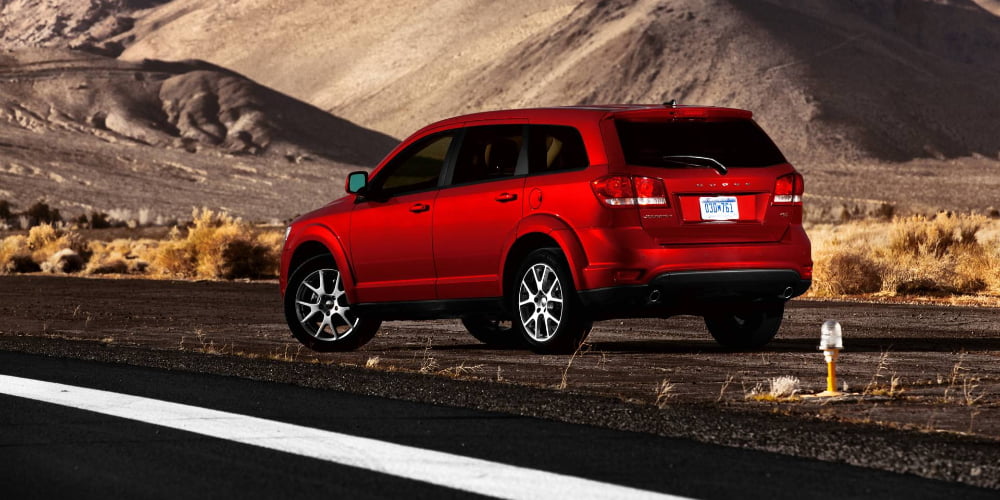Fix Check Engine Light: 2019 Dodge Journey
Contents
Hide
The 2019 Journey relies on updated PCM logic, dual-stage oil pump control, and emissions monitors shared with the Grand Caravan. This guide explains how to diagnose and resolve MIL issues using a structured, English-only workflow.
- Applies to: 2019 Journey SE, Crossroad, GT AWD.
- Tools: Enhanced OBD-II scanner (Mode $06$), smoke machine, fuel pressure gauge, DVOM, mechanical oil-pressure gauge.
- Immediate warning: A flashing MIL signals severe misfire. Reduce load immediately to prevent catalyst damage.
Key 2019 Journey Codes
| Code | Subsystem | Likely Cause | First Checks |
|---|---|---|---|
| P0300/P030x | Ignition/Fuel | Coils, plugs, injector imbalance, compression loss | Review misfire counters, inspect plugs/coils, swap components, perform compression/leak-down. |
| P0430/P0420 | Catalyst | Efficiency drop after misfire or exhaust leak | Check misfire history, inspect exhaust manifolds, compare O2 sensor waveforms. |
| P2096/P2098 | Fuel Trim | Post-cat lean condition from leaks or biased sensors | Smoke-test intake/exhaust, inspect PCV system, monitor STFT/LTFT during cruise. |
| P06DD/P06DE | Oil Pump Control | Dual-stage pump stuck, incorrect filter, wiring issue | Confirm Mopar filter, measure mechanical oil pressure, inspect harness near oil cooler. |
| P0456/P0457 | EVAP | Small leak (fuel cap, vapor hose, ESIM) | Verify cap seal, command purge closed, apply smoke via EVAP service port. |
Diagnostic Workflow
- Record baseline data: Save stored/pending/permanent DTCs, freeze-frame, Mode $06$ misfire counts, and fuel trims before clearing.
- Fix misfires first: Replace spark plugs if overdue, swap coils, check injector balance, and verify compression.
- Address fuel-trim and catalyst faults: Repair intake/exhaust leaks, then road-test while graphing O2 sensors and trims.
- Verify oil pump control: Attach a mechanical gauge for hot idle/3,000 rpm readings and inspect wiring for chafing.
- Seal the EVAP system: Command purge closed, smoke-test, and repair hoses or ESIM leaks.
- Complete validation drive: Clear codes, drive 50 miles with mixed conditions, and re-scan to ensure readiness monitors are COMPLETE.
Driving Guidance During Diagnosis
- Limit heavy acceleration and towing while misfire or catalyst codes are active.
- Short trips with EVAP-only codes are acceptable, but schedule repairs before inspection deadlines.
- Monitor oil pressure and coolant temperature; abnormal readings require immediate evaluation.
Preventive Maintenance Checklist
- Change MS-6395 5W-20 oil and Mopar filter every 6,000 miles.
- Replace spark plugs at 100,000 miles (3.6L) or 60,000 miles (2.4L) and inspect coil boots for tracking.
- Inspect intake manifold gaskets, PCV valves, and purge hoses during each service.
- Check exhaust manifold studs annually; leaks trigger catalyst and fuel-trim codes.
- Test battery health twice per year; low voltage can generate random misfire codes.
Frequently Asked Questions
Why does the light return after clearing?
The PCM reruns diagnostics and will turn the MIL back on if the underlying fault remains. Repair the cause before clearing.
No. Misfires require repairs to ignition, fuel delivery, or mechanical components, not higher octane fuel.
How long should I drive before inspection?
After repairs, drive roughly 50 miles with city, cruise, and idle segments so readiness monitors confirm the fix.
